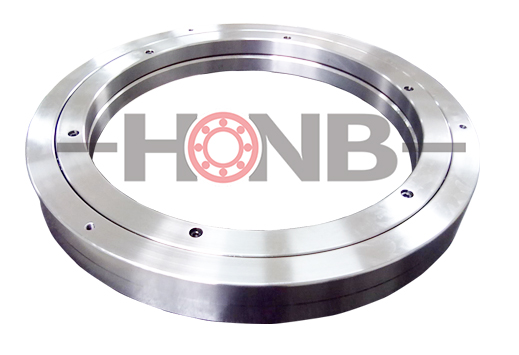Method for measuring radial clearance of rolling bearings
The measurement of radial clearance of rolling bearing is to fix the inner ring or outer ring, apply the measurement load which can get the fixed side value on the unfixed ring, and measure it by reciprocating movement in the diameter direction. Set the side measuring head in the middle of the width of the unfixed inner or outer ring, read the movement of the unfixed ring along the load direction at all angles (roughly evenly distributed) positions (at least three), and its arithmetic mean value (deducting the increase of the radial clearance of the bearing caused by the load (see the table below) is the radial clearance value of the bearing.
Due to the different structure types of rolling bearings, clearance detection methods are also different. At present, there are three commonly used methods for measuring bearing clearance: special instrument detection, simple measurement and feeler gauge measurement.
1, special instrument detection
For deep groove ball bearings, self-aligning ball bearings, cylindrical roller bearings, needle roller bearings, self-aligning roller bearings, currently there are corresponding high efficiency dynamic radial clearance detector without load, the models are X093J, X094J, X0910, etc., the inner diameter of the tested bearings is 10~210mm. These instruments enable the bearing to rotate without load, and can directly and accurately reflect the mean value of radial clearance. The detection process is automatically controlled, and the measurement results are displayed digitally.
When radial clearance is detected with load, the inner ring is fixed on the end face of the spindle, and the movement amount of the outer ring from one limit position to another limit position is measured, that is, the difference between the changes of indicator A and indicator B is radial clearance. It is measured every 120°, and the arithmetic mean value of the three measurement results is the radial clearance value of the bearing.
During the measurement, the inner ring should be tightened as little as possible, and the radial movement of the inner ring should not be obvious after the measurement load is added, and the measuring point passes through a rolling body.
2. Simple measurement
Simple measurement method is used when the bearing size exceeds the measurement range of special instruments. This method depends on the skills of the operator. Excessive finger pressure should not be applied when measuring.
When testing, press the inner ring tightly, push and pull the outer ring by hand, and the numerical difference reflected on the table is radial clearance. In order to compensate for the possible roundness errors of the inner and outer rings, the same process can be repeated several times at different Angle positions, and the arithmetic average of these readings is the radial clearance value of the bearing.
3. Feeler gauge measurement
The feeler gauge measurement method is suitable for the detection of radial clearance of large and extra-large cylindrical roller bearings and self-aligning roller bearings, measuring the bearing vertically or horizontally. The feeler gauge method is sometimes used to measure axial clearance.
When the feeler gauge is used to measure the bearing and small path clearance between the circumference of each row of rollers and raceway, it is determined by the following method: Radial clearance: rotate the inner ring and the roller cage assembly once, and the thickness of the feeler gauge sheet that can pass on three consecutive rollers.
Small path to clearance: turn the inner ring and roller cage assembly one round to a small thickness of the feeler piece that cannot be passed on three consecutive rollers.
The measured and small gaps are allowed to be less than or no greater than 0.01mm of the specified limit value because of the allowable error in the measurement including the gauge thickness allowance. The arithmetic mean of measured clearance and small clearance is the radial clearance value of the bearing.

After the radial clearance value of each row is measured, the arithmetic mean value of the radial clearance value of the two rows is taken as the radial clearance value of the bearing. For cylindrical roller bearings with multiple rows, the radial clearance value of each row should be measured and meet the requirement of clearance difference between them.
If you have any questions,pls feel free to contract us.
E-mail:bearing6@hyzcgroup.com
- YRT rotary table bearing
- YRTS rotary table bearing (high speed series)
- YRTM with integral angular measuring system series
- ZKLDF axial angular contact ball bearing series
- RA series crossed roller bearing
- SX series crossed roller bearing
- CRBH series crossed roller bearing
- RE series crossed roller bearing
- RU series crossed roller bearing
- RB series crossed roller bearing
- XR/JXR series crossed taper roller bearing
- Crossed roller bearing

✉️ bearing20@hyzcgroup.com
📞 +86 15236685001





